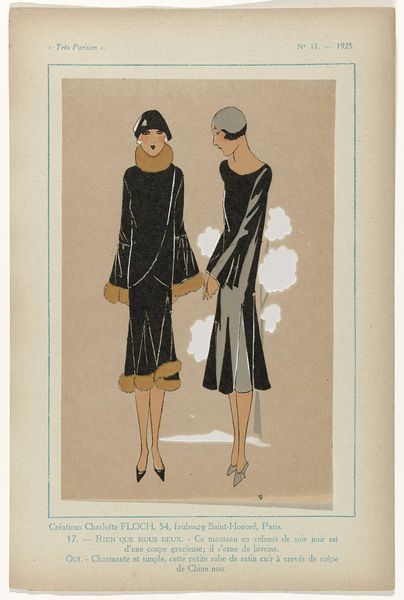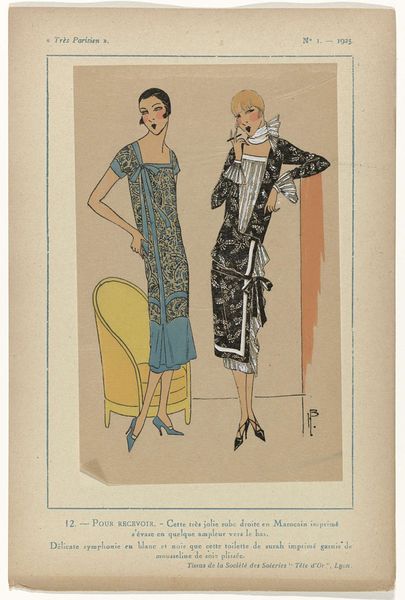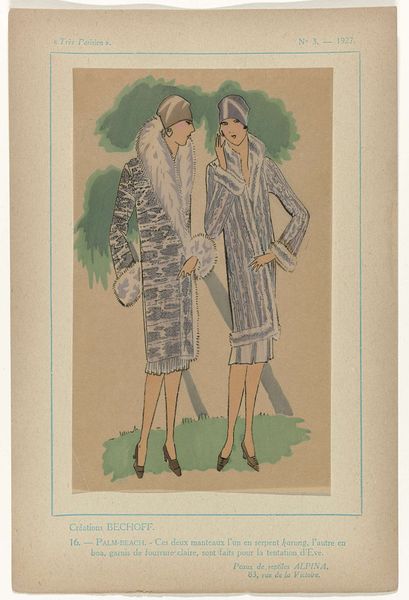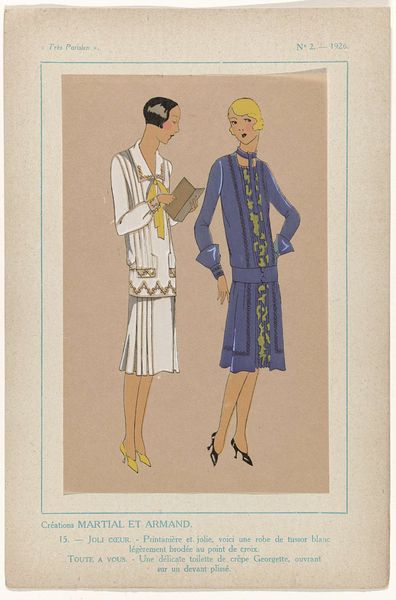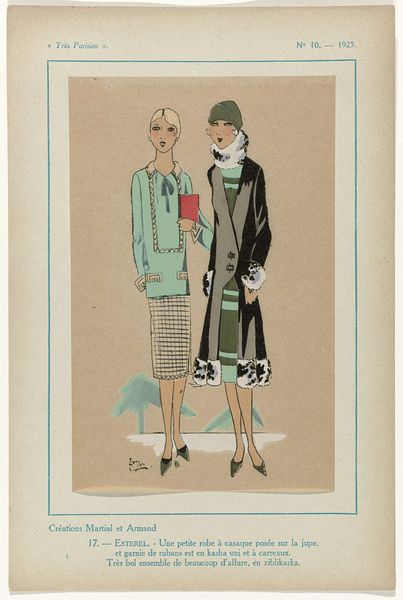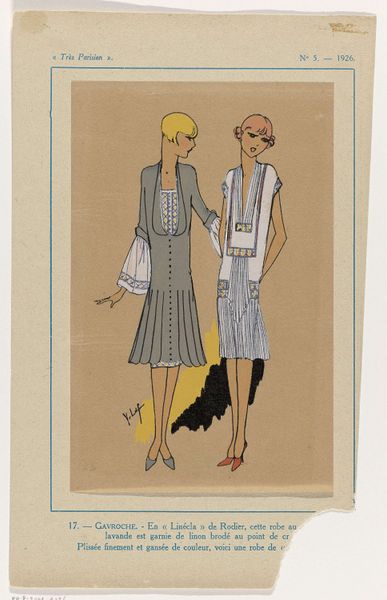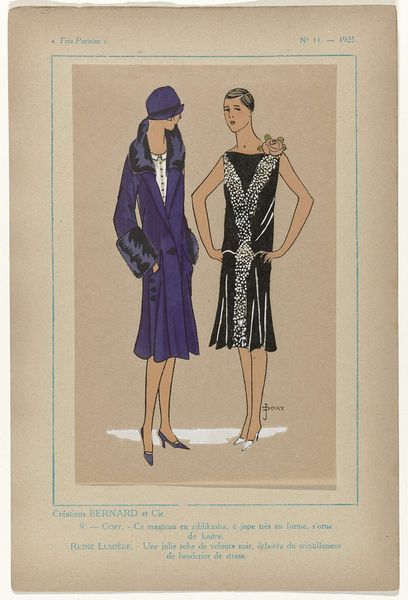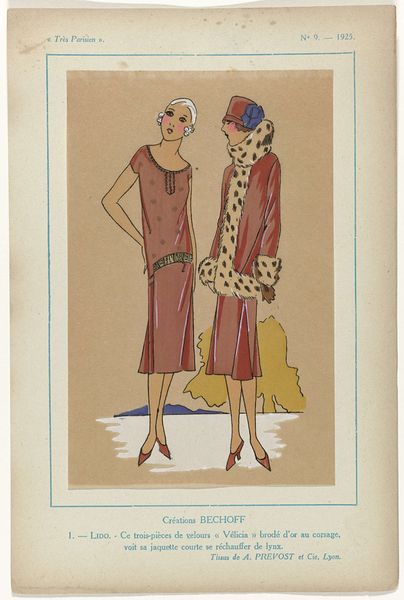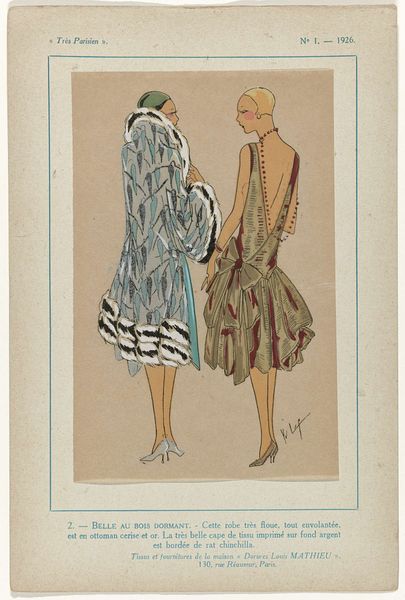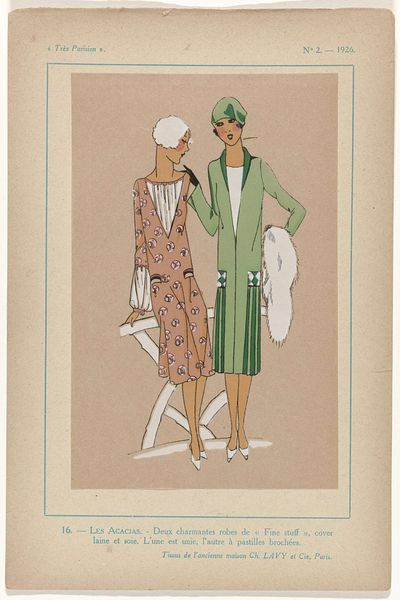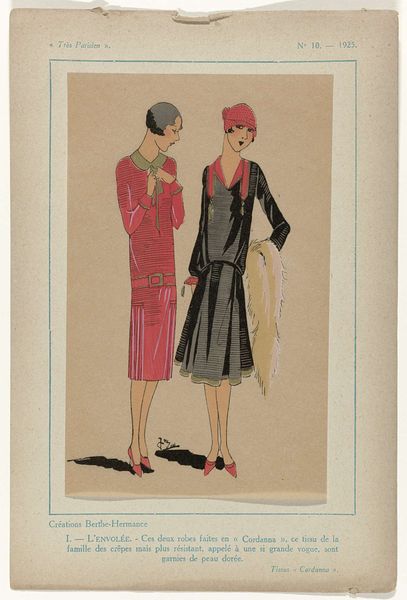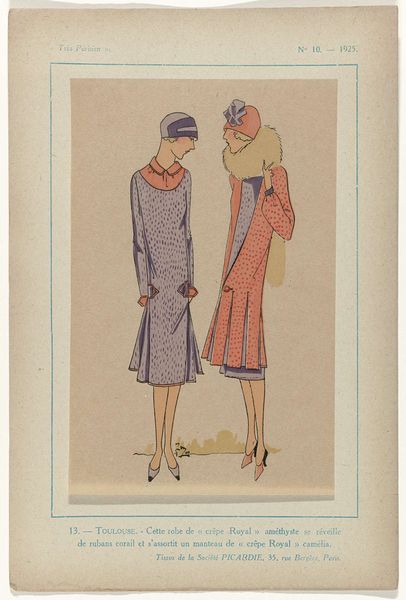
drawing, paper, ink
#
portrait
#
art-deco
#
drawing
#
paper
#
ink
#
watercolour illustration
Dimensions: height 195 mm, width 120 mm, mm
Copyright: Rijks Museum: Open Domain
Editor: This is "Trés Parisien," plate 3 from 1925, credited to G-P. Joumard. It’s a watercolor and ink drawing on paper, showcasing two strikingly different Art Deco dresses. What particularly intrigues me is how the stark black and white contrast emphasizes the distinct textures of the fabrics and embodies the glamour of the Jazz Age. What historical perspectives can you share? Curator: It's a wonderful example of the era's changing social landscape. Fashion plates like this served as powerful tools, not merely showcasing clothing but actively constructing ideals of feminine identity. Consider the term 'Gribouille' used in the description, meaning scribble; the artist playfully subverts expectations, nodding to fashion as transient, ephemeral and a modern expression of self-invention. How does the stark contrast of black and white engage with notions of modernity? Editor: It seems that by juxtaposing the black and white, the image embodies this era's social tensions, tradition vs. modernity, and this sense of "new woman" figure finding her own place in this changing society. Would you agree? Curator: Exactly! The sleek, almost severe lines of the black velvet coat paired with the looser silhouette and delicate pattern of the white poplin dress point to competing yet coexisting ideals of female representation. Joumard positions the 'new woman' negotiating established codes of bourgeois elegance, against the rapidly shifting values that would redefine gendered social space during this period. It’s fascinating to see these concepts visualized and disseminated through such a seemingly innocuous medium. What's your understanding of who the audience was and where they would have encountered such an image? Editor: This plate was most likely targeted at upper middle-class women. Published as part of a broader series of fashion illustrations, designed for those who could afford the styles represented or aspired to achieve them. I guess, art played a crucial role in shaping the consumer culture. Curator: Absolutely. These illustrations operated within and helped to shape that culture, further establishing the museum's, and art's role, as arbiters of taste. I've really learned a lot listening to you speak. Editor: Thank you! Thinking about how art intersects with commerce and social identity really opens up a whole new way to look at fashion illustration.
Comments
No comments
Be the first to comment and join the conversation on the ultimate creative platform.
